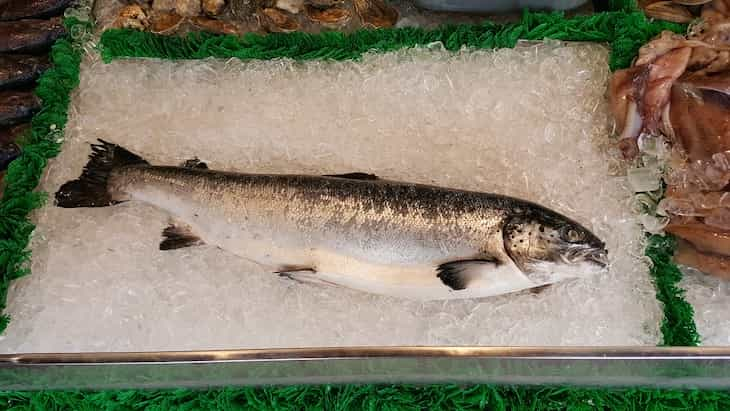For most people, only the kind of fish matters – they just recognize its taste and texture.
But if you actually love fish, then you might know that even male and female fish of the same kind might have a slightly different taste and texture.
If you want to choose exactly male or female fish to cook a certain dish, then use these tips to find what you need.
Size
Generally, male salmon are larger than females.
They tend to grow bigger in order to compete for mates during the breeding season.

Shape
In terms of body shape, male salmon often have a more elongated and streamlined appearance compared to females.
Females may appear slightly rounder, especially when they are carrying eggs.
Coloration
During the breeding season, male salmon undergo changes in color to attract females and compete with other males.
They often develop brighter and more vibrant hues, such as red, green, or orange, on their bodies, particularly on their bellies and heads.
Females, on the other hand, typically maintain a more subdued coloration.
Jaw Structure
One distinctive feature of male salmon is their modified jaws, known as "kypes."
As they prepare for breeding, male salmon develop a hooked lower jaw, which helps them fight other males for dominance and defend their spawning territories.
Females, however, do not have this prominent jaw structure.
Spawning Behavior
During the spawning season, male salmon display more aggressive behavior than females.
They actively compete with other males, often by engaging in territorial disputes and chasing away rivals.
Females, on the other hand, focus on finding suitable locations to lay their eggs.
Previously, we talked about social adaptation in dogs.








